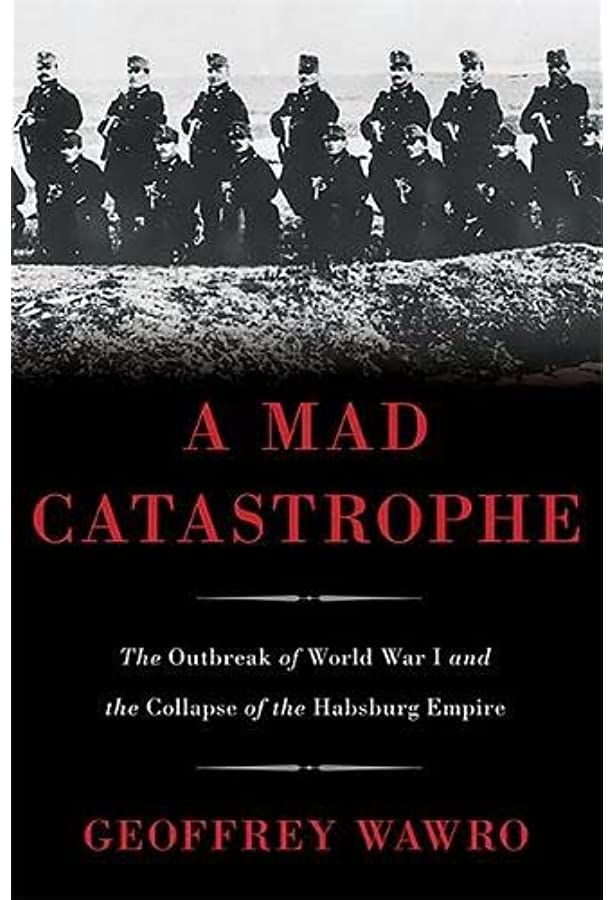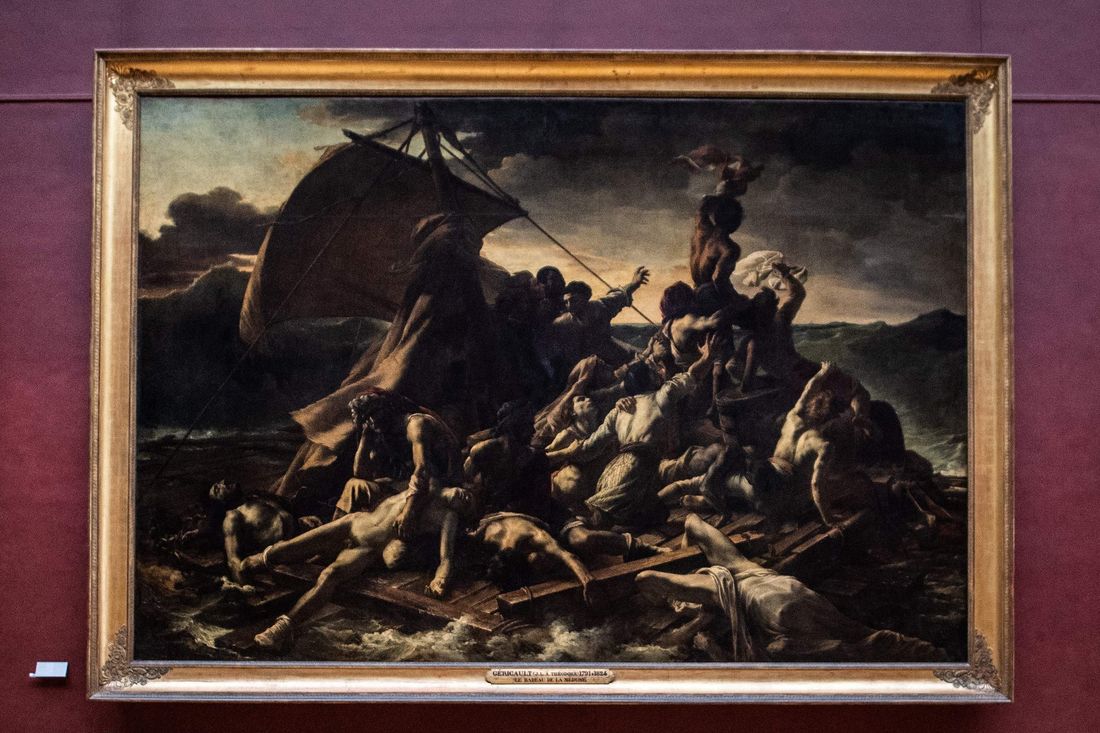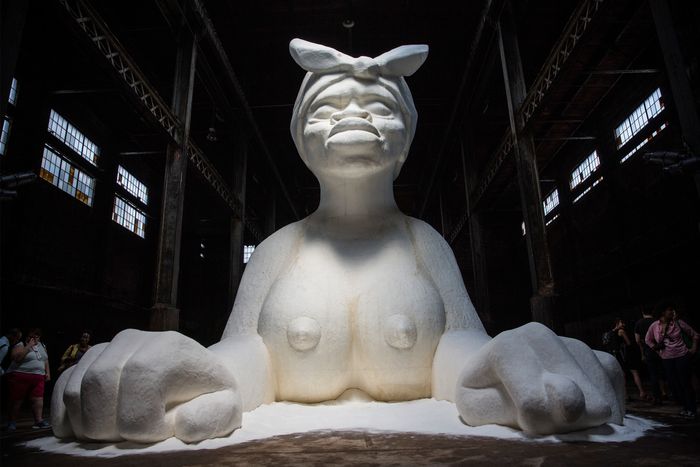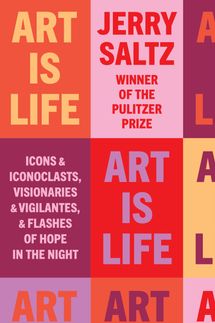
[ad_1]

Théodore Géricault’s The Raft of the Medusa
Photograph: Martin Bureau/AFP by way of Getty Pictures
This text was featured in One Nice Story, New York’s studying advice e-newsletter. Join right here to get it nightly.
The primary time the facility of artwork pulled the rug out from beneath me, I used to be 19 years outdated.
It was the early Seventies. I used to be in Europe for the primary time, on my manner by Paris to Warsaw with my Polish girlfriend, on a weird quest to promote blue denims behind the Iron Curtain. On that day, throughout my first pilgrimage to the Louvre, I laid eyes on a portray that appeared the sum of all issues. It was a cosmographic perpetual-motion machine, a purgatorial charnel home. The second I noticed it, one thing like Krakatoa went off inside me. That portray was Théodore Géricault’s The Raft of the Medusa.
The Raft of the Medusa is very large in scale, but its material is so simple as bathers by a river, cows in a area, a start in a manger. We see a big raft bearing a crowd of male figures on the mercy of heaving seas. Their poses recommend a classical frieze, like Elgin marbles from hell. It’s a collective ash heap of individually vivisected souls stripped naked of humanity.
Every of the lads is marked by a definite, unforgettable gesture. Some are reckoning with their wounds; others appear to be coming to phrases with loss of life; some seem nearer to damnation than to life. Each one in every of them seems hopeless. But the work itself paradoxically offers hope for its very presence. That is what Marianne Moore meant by “hope not being hope / till all floor for hope has / vanished.” That is that second.
Each murals tells a narrative, from outlined arms on cave partitions to figures arrayed at a desk for a Final Supper. From gleaners in a area to luncheons on the grass. From romping Greek gods to a Sunday within the park to the cutout silhouette of a white man beating a slave. The subject material of Michelangelo’s David is a biblical story informed in marble. However the deep content material of this 500-year-old sculpture — its aesthetic substructure, its crux and lifeblood — consists of concepts about sensuality, magnificence, majesty, pathos, the facility of the self, the potentiality of motion, the grandeur of being alive, inchoate softness of marble, even the attention of the just lately rediscovered Laocoön and His Sons, a Roman statuary so radical it appears to have virtually given Michelangelo a nervous breakdown. Goya’s Saturn Devouring His Son, Toni Morrison’s The Bluest Eye, Aleksandr Solzhenitsyn’s One Day within the Lifetime of Ivan Denisovich, Nina Simone singing “Unusual Fruit,” and Francis Ford Coppola’s Apocalypse Now all make you expertise alienation, rage, horror, revulsion, love, grace, ugliness, absurdity, hopelessness, bloodlust, bleakness, recollections of conferences and partings, nightmares, phantoms, cultural dysmorphia, shapeless internal shadows, the shattering collapse of ethical order, and the decay of the soul — all on the similar time.
The portray I noticed that day on the Louvre had its origins in a real-life story of the recolonizing of Africa. In June 1816, the French frigate Medusa and three different ships headed to Senegal to renew commerce, finally together with the slave commerce, which had been interrupted by the Napoleonic Wars. The Medusa’s captain was Hugues Duroy de Chaumareys, a 52-year-old royalist who hadn’t been to sea in many years. The folks onboard, some 400 in all, had been a mixture of monarchists, households, retailers, mercenaries, and ex-convicts. The ship was inadequately outfitted, carrying defective maps and too few lifeboats. Chaumareys separated from the remainder of the remainder of the fleet and shortly was crusing alone. Inside days, a person was misplaced overboard, and with distrust rising, others started looking for methods to get round Chaumareys.
By July, the Medusa was approaching the lethal Arguin Financial institution, an expanse of shallower water off the coast of West Africa that had wrecked quite a few ships. Members of the crew knew the maneuvers to steer round this grave hazard, however the ship’s smug management ignored them. Fatally, one essential landmark was mistaken for one more, and on July 2, the Medusa headed immediately into the financial institution. The colour of the ocean modified from deep blue to lighter inexperienced, then turned clear altogether. In denial of the looming catastrophe, sailors took to fishing the plentiful waters. Then the angel of loss of life breathed on them. With an important scraping sound, the Medusa shuddered, shook, and ran aground. Dread came to visit the crew; the ship fell into hushed terror.
The crew scrambled to free the boat. The ship was far too heavy to drag out by typical means. Barrels of gunpowder had been thrown over to lighten the vessel. However Chaumareys refused to jettison the heavy cannon, which seemingly would have allowed the ship to drift free. Thus Medusa’s destiny was sealed. Panic set in, recriminations flew, anarchic ransacking broke out. Amid all this, Chaumareys ordered the development of a really giant raft to be pulled to shore by 5 boats. Quickly the captain, alongside along with his officers and their households and associates and others chosen by them, boarded the less-than-full boats and ready to solid off because the raft sat within the water.
With that, every thing fell aside. Violence erupted; folks panicked. Many stuffed themselves with wine, water, and meals and threw the rest overboard. Individuals jumped off the ship to board the raft. 100 forty-seven folks, together with one girl and a 12-year-old boy, crowded onto the unsteady raft, which had sagged two toes deep within the water when solely 40 had boarded. Many needed to stand. Within the mild of early morning, one of many boats tied a line to the raft. When the rope was pulled, the raft barely moved. After greater than 5 hours of struggling unsuccessfully to tow the raft, at 11 o’clock within the morning got here the fateful order: The road was minimize. The raft and its 147 souls had been solid adrift. Chaumareys and his companions sailed off.
The raft had no maps, oars, or navigational devices. On the primary night time, wind and white-capped waves wracked the raft. By morning, a few dozen had been lacking and plenty of others grievously injured. The following day introduced three suicides. Then got here hallucinations, starvation, thirst, fights, and delirious violence. Individuals had been overwhelmed, stabbed, hacked with hatchets, bayoneted, had their eyes gouged out, and had been pushed into the ocean. On this relentless frenzy, factions slaughtered each other. By daybreak, one other 60 had been lifeless. On the third day, the starvation was excruciating. Some ate their leather-based scabbards and parts of their greasy hats, and the cannibalism started. Useless flesh was hung from ropes to dry. Some survivors ate immediately from corpses. These deemed too weak to outlive had been thrown overboard. Almost two weeks handed this manner.
On the morning of July 17, a tiny white speck was noticed on the horizon: a sail; survivors gestured wildly for assist. Then the sail started to vanish. That is the actual moment Géricault appears to provide us in The Raft of the Medusa, the one survivors mentioned was darkest of all: a tableau of souls being solid into hell. That is the deep content material of the portray — the second when all hope is misplaced.
The calamity of the Medusa is a narrative of abject human failure. Though the sail finally reappeared on the horizon and 15 surviving passengers had been rescued, 5 of them died inside months of reaching land. Because the survivors’ tales of malfeasance, cruelty, betrayal, and barbarism poured into France, the wreck of the Medusa grew to become a world scandal, a logo of a rustic torn aside. On the subsequent court-martial, Chaumareys blamed delays, unhealthy maps, stress from his superiors, and defective tools for the catastrophe, taking no duty himself. He was not discovered responsible of the capital crimes of abandonment and was sentenced to 3 years for easy negligence. Nobody was actually held to account, and no precise justice was served.
There had by no means been a portray that regarded like Géricault’s Raft of the Medusa. Whereas its pyramidal composition, figurative ability, and virtuosity recall the neoclassicist artwork that instantly preceded it, the Medusa is basically completely different. The floor feels alive and molten like sluicing paint; its tone is darker, its imagery extra graphically dramatic and aggressively convulsive, as if Géricault had been approaching some new fiery elegant. He started work in a second when the qualities of 18-century neoclassicism — its enervated easy surfaces, silky perfections, rote lionizations of male energy, and idealizations of historical past, fantasy, revolution, and battle — had come to appear insipid and irrelevant. By 1815, when Napoleon was defeated at Waterloo, some 3 million folks had been killed in additional than a decade of European wars. The continent was decimated. Nice Britain and Russia emerged victorious. France was annihilated, its society in chaos. It was a nation in mourning and at battle with itself. But in any case that, lower than a month after Waterloo, the guillotined king’s youthful brother was named king. Quickly he started reinstating lots of the figures of the failed ancien régime: aristocrats, naval commanders, bureaucrats, ministers, and lackeys. This, too, is a part of the deep content material of The Raft of the Medusa: It marks the dying of 1 epoch and the beginning of one other.
Géricault turned 27 in 1818, a handsome, well-off artist who’d just lately returned from Rome after an ill-fated affair along with his uncle’s spouse. The Paris he returned to was seething with rage at its leaders over a slate of latest censorship legal guidelines and the destiny of the Medusa. Galvanized by the survivors’ tales, he resolved to seize the catastrophic implications of the occasion. Earlier than setting down his imaginative and prescient, he interviewed the authors of the best-selling account of the wreck and met with different survivors. He traveled the English Channel to check waves, even retrieved cadaver elements from a close-by morgue to his studio to higher seize the looks of lifeless flesh. He made scores of preparatory sketches and research and even had a reproduction of the raft constructed in a studio he’d rented simply to make this image. He shaved his head, withdrew from society, and labored alone from morning mild to dusk in full silence for months. By July 1819, three years after the wreck, the portray was practically completed. In August, it was on show in that 12 months’s Paris Salon.
At first, the portray was mounted excessive on a wall, however Géricault quickly bought the portray moved nearer to eye degree. It was offered beneath the generic title of The Scene of the Shipwreck with a purpose to disguise the portray’s political topic, however everybody who noticed it acknowledged what they had been taking a look at: the raft, the faces, the flesh, the horror. One reviewer lambasted the scene as “monstrous” with “nothing touching, nothing honorable.” Many had been disturbed by its grotesque imagery and darkish implications. However the wisest of Géricault’s contemporaries understood what one French observer later wrote: that “our entire society … loaded on the Medusa.”
The Raft of the Medusa was awarded one of many Salon’s gold medals that 12 months, however the work was not acquired. Its reception on the Salon devastated Géricault, who eliminated the canvas from its stretcher, rolled it up, and saved it in a good friend’s studio. The portray was bought by the Louvre not lengthy after Géricault died at 32 of spinal tuberculosis. On the time of his loss of life, he was getting ready one other gigantic work — this one on the annihilating atrocities of slavery.
On the apex of the Medusa, its protagonist and point of interest, is among the three Black figures within the work. Most of the different figures on the raft encompass, maintain on to, stretch towards, and assist him; he’s their avatar and savior. Right here had been three Black males pictured as folks, not property. Different faces depict precise people on the raft, together with survivors Alexandre Corréard and Henri Savigny, who penned the guide that fueled the scandal. The mannequin for the determine at middle foreground, mendacity face down with one arm outstretched, was the younger painter Eugène Delacroix, who discovered the portray’s impact so terrifying that after posing for it he “broke right into a run and stored working like a idiot all the way in which again.” On the correct, we see the twisted physique of a presumably drowning man and the stays of a tattered French flag. On the left, a man stares into house as he cradles an iridescent physique, in Dylan Thomas’s phrases, “inexperienced and dying.” He’s a Pietà for the premodern age.
The Raft of the Medusa helped speed up the motion referred to as Romanticism. In it, we discover the start of the trendy consciousness with its new anxieties: the person on their very own, homesick for different instances and locations; the violence of battle; a rebuke to rationality; an curiosity in mysticism, fairy tales, and the occult; the worship of youth and innocence; and an ecstasy in elegant states of thoughts and nature at the same time as the commercial revolution introduced the pure world to the verge of destruction. This psychic shattering is mirrored within the creations of 5 different artists working in the identical historic second as Géricault: Mary Shelley’s Frankenstein (1818), Percy Bysshe Shelley’s “colossal Wreck” of “Ozymandias” (1818), the “Black Work” of Francisco Goya (1819–23), the cryptic visions of William Blake, and Beethoven’s Ninth Symphony (1822–24).
The fundamental energy and poetry of Géricault’s Medusa modified me without end. It informed me issues I’ve recognized and lived by ever since. To come across a murals for the primary time is to confront, for an instantaneous, one thing you’ve by no means seen in your life. You might be reminded that what you’re taking a look at was as soon as (or maybe nonetheless is) up to date artwork in direct dialog with its personal time. All artwork is a form of exorcism. That is what offers artwork its energy to alter the circumstances of our life.
Ours is an period of ships of state piloted by mad captains and crews gone loopy. Constructions are rotting; one epoch is dying; we don’t but know what’s forming. All of the artwork made in america from the contested 2000 election to the contested 2020 election to as we speak has been made beneath extraordinary circumstances. The artwork made on this interval has been waist-deep within the mud of politics.
The issue with a lot so-called political artwork is that, whereas their material could also be “radical,” the formal tropes, aesthetic grammars, conceptual ticks, and visible idioms they usually use have turn into dogged, predictable, stuffed with bathos — in a phrase, generic. “Involved” artwork has turn into a safe-space home type for artists, curators, and collectors. Alas, for critics as effectively. If the subject material is deemed “good,” so is the work, even when the work is apparent and banal. Irrespective of; there’s the implication that this type of artwork is in some way higher, extra moral or legitimate, than different work. Plenty of this artwork merely does what Bob Dylan in 1964 mentioned he didn’t need to do anymore: write “finger-pointing songs.”
Kara Walker’s 2014 A Subtlety, or the Marvelous Sugar Child.
Photograph: Andrew Burton/Getty Pictures
Marianne Moore as soon as wrote, “To doubt is merely part of liking, and of feeling.” However there’s virtually no appreciation of this work that isn’t infallibly positive of itself. And to criticize this artwork is to be seen as being towards no matter injustice the work spotlights. The type is marked by extremely produced or discovered objects put in in massive galleries, atria, and biennials everywhere in the world. Consider Jennifer Allora and Guillermo Calzadilla’s 52-ton tank on the 2011 Venice Biennale, positioned the other way up in entrance of the American pavilion with a world-class athlete engaged on a treadmill atop the tank’s wildly spinning treads. You possibly can hear this warlord sculpture everywhere in the Giardini. Or the lottery tickets to win a helicopter experience in 2012 at Documenta that had been, I believe, about wealth accumulation. Or one thing. As with most work like this, it protects itself with veiled claims of being anti-market. (I recall even the nice Marina Abramovic sniffing at a present for being concerning the market. I yapped, “However you’re in all probability a multimillionaire out of your work!”) By no means thoughts that their budgets are in all probability larger than what would go into making 1000’s of different artworks.
In 2019, Christoph Büchel positioned the retrieved hull of a ship that killed at the very least 800 determined Libyan migrants in that 12 months’s Venice Biennale. Not offensive however nonetheless wan was Zoe Leonard’s touring alongside the U.S.-Mexico border to make greater than 500 ho-hum black-and-white footage of the world. (There’s even a tony two-volume guide dedicated to it.) The compulsory footage of helicopters, patrol autos, and folks within the river completely mimic the aesthetically preapproved documentary-style pictures of Seventies Conceptualism and post-minimalism and never a lot else.
We see these and different objects accompanied by images, texts, mementos, historic artifacts, documentary materials, video/movie elements, and sound. In lots of circumstances, we may even see objects scattered on the ground, hung from ceilings, leaned on partitions, or unfold into close by galleries — “intervening” with different artwork. There have been numerous banners and textual content issues of late. Modernistlike dancers seem usually. A lot of this work seems like set design and retailer show.
Simone Leigh’s Sovereignty.
Photograph: Giuseppe Cottini/Getty Pictures
An important element of all is the lengthy wall label that explains what this work is about, normally in hard-to-parse prose. I like to recommend skipping to the next-to-last sentence, the place the precise work may be addressed. This type of artwork usually insists on one which means. (It’s like insisting somebody have an orgasm.) The tendency is paralyzing, miserable, and annoying. As I checked out one set up of images of clouds, a curator whispered, “These pictures had been taken over Ferguson, Missouri. They’re concerning the riots. Aren’t they highly effective?” I mentioned, “No. These are boring, generic black-and-white images.”
We should always not generalize. There is nice political work being made as we speak. However as with Géricault’s nice aesthetic-political accomplishment, this work shouldn’t be solely and clearly “political.” It’s nice not for what it’s purported to be about however for the methods it employs kinds, supplies, and creativeness. Artwork works in mysterious methods. Neither Donald Judd nor Andy Warhol, Bridget Riley nor Yayoi Kusama, Charles Eames nor Zaha Hadid makes what seems like “political artwork.” But every modified the way in which the world seems and the methods we take a look at the world. That’s revolutionary — that’s political. Over the millennia, artwork has been used to heal, solid spells, chase away evil spirits, stop or assist with pregnancies, converse to God, or permit the lifeless to look out on the afterlife, as in within the case of eyes painted on Egyptian sarcophagi. The Sistine Chapel’s Final Judgment has been seen as a weapon towards the Reformation.
Depth prices go off in Sally Mann’s images that pull again the curtains of the taboos on adolescent sexuality. Matthew Barney’s protagonist — when he lastly fails in his resistance to be gendered — and Deana Lawson’s tableau of our bodies pose robust and unusual questions concerning the nature of identification. You don’t want lengthy wall labels to inform you you’re crossing some startling line to know this. It’s embedded within the artwork. The political content material is so robust in Chris Ofili’s glowing portray of a Black Virgin Mary adorned with adorned elephant dung that then-Mayor Rudy Giuliani tried to chop off the Brooklyn Museum’s financing when it confirmed the work. And despite the fact that it’s troublesome to search out the political message of summary artwork, probably the most profitable battle memorial of the previous half-century is Maya Lin’s all-black Vietnam Veterans Memorial.
Amy Sherald’s portrait of Michelle Obama.
Photograph: Matt McClain/The Washington Put up by way of Getty Pictures
Contemplate Simone Leigh’s mind-blowing, shot-through-the-heart indictment of how all issues western are constructed on colonialism. That is her set up Sovereignty, wherein she adorned the U.S. pavilion at this 12 months’s Venice Biennale with a easy thatched roof and wood posts in entrance. It evokes magnificence, poetry, cultural revolution, diaspora, and the molten core of western wealth, and it tingles you to the bones. Or Amy Sherald’s smoldering portrait of Michelle Obama together with her hair down, shrouded in a white robe with geometric patterns. (It’s a lot stronger than Kehinde Wiley’s intelligent peekaboo photorealistic portrait of Barack Obama and much superior to the latest hyperrealist portrait of the previous president and the saccharine one of many former First Woman.) Sherald’s easy brushstrokes emit dignity, decorum, and one thing virtually non secular. The pores and skin is painted in grayscale, which disrupts and undermines the racial lens Obama is so usually seen by. Sherald’s mysterious image is open to interpretation; it begins conversations fairly than ends them.
It’s also an announcement of inventive intention to interrupt freed from one thing. Sherald paints within the standard style of figuration and portraiture. But she makes use of this conference fairly than letting it use her. We see an artist who, like her topic, has willed herself to be comfy with being uncomfortable, allowed herself to cease being self-conscious about being watched.
The most effective “political” work made this century wanted no wall label in any respect — it was radioactive, harmful, and transformative by itself. This was Kara Walker’s 2014 A Subtlety, or the Marvelous Sugar Child, her colossal apparition of the common current. A towering, bare feminine sphinx product of Styrofoam and a few 30 tons of sugar, wrapped in a scarf and with options of the stereotypical Black mammy, it’s a sepulcher of organized violence and retribution, a deity acquainted with righteous ire and grief. Coming simply two years earlier than Donald Trump’s election, it was a harbinger of a rustic that may discover itself in captivity to the previous.
I bear in mind pondering, It’s like a god made this. It appeared to land right here as witness and a warning. Walker referred to as it “a brand new world sphinx.” She mentioned she was “attempting to get a grasp on historical past” and to convey the “meaty, unresolved, mucky blood lust of speaking about race the place … the dialog is inconclusive.” A Subtlety created an area past language the place audiences slipped into the recollections of the lifeless then reawakened in a damaged world that had been coming for a very long time. What poet Rene Ricard meant by “democracy gone blind.”
[ad_2]
Supply hyperlink



